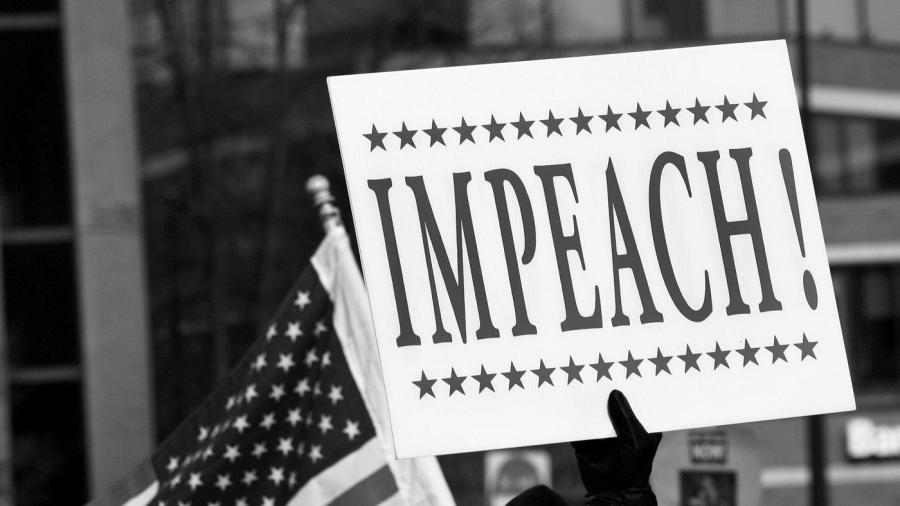How Many Votes Does It Take to Impeach a President?

A simple majority of the House of Representatives (at least 218 votes) is required to impeach a U.S. President followed by a two-thirds majority vote in the Senate (at least 67 votes).
Impeachment Process
Article II Section 4 of the United States Constitution states: ‰ÛÏThe President, Vice President and all other civil officers of the United States shall be removed from office on impeachment for, and conviction of, treason, bribery or other high crimes and misdemeanors.”
The impeachment process begins in Congress. The Justice Department or any other independent council investigates charges and presents them to the House Judiciary Committee. The House Judiciary Committee reviews the evidence and drafts the Articles of Impeachment. This is presented to the full House and debated. A simple majority of the House is required to impeach the president. However, after impeachment the president remains in office until trial by the Senate.
In the Senate, the House Judiciary Committee acts as the prosecution, the Senate as the jury and the Chief Justice of the Supreme Court as the judge who rules on the admissibility of the evidence presented. The accused president can hire his/her own lawyers. A two-thirds majority of the Senate is required to vote against the accused and remove the president from office.
As at November 2017, only two U.S. Presidents have been impeached (Andrew Johnson and Bill Clinton). Two others (Richard Nixon and John Tyler) faced similar charges without being impeached. However, no U.S President has ever been removed from office through this process.
Andrew Johnson
After his removal of Secretary of War Edwin Stanton from the Cabinet, Andrew Johnson was charged with breaching the Tenure of Office Act. He was impeached by the House of Representatives on Feb. 24, 1868. After two months of trial in the Senate, he was acquitted by a margin of 35 guilty to 19 not guilty, one vote short of the two-thirds majority required.
Bill Clinton
Bill Clinton’s alleged extramarital affair with White House intern Monica Lewinsky resulted in his impeachment by the House of Representatives on Dec. 19, 1998. The charges for the impeachment were perjury and obstruction of justice. In the end, 50 senators voted to convict him on obstruction of justice and 45 found him guilty of perjury. Clinton remained in office because the required two-thirds, or 67-vote, minimum was not reached.
Richard Nixon
Richard Nixon‰Ûªs White House had been linked to the Watergate scandal, in which his administration had tried to cover up its involvement in the break-in at the Democratic National Committee headquarters in Washington. On Feb. 6, 1974, impeachment proceedings formally began. In July 1974, three articles of impeachment against Nixon were approved: obstruction of justice, abuse of office and contempt of Congress. Nixon resigned on Aug. 4, 1974 before the proceedings could continue. Vice President Gerald Ford finished Nixon’s term of office.
John Tyler
John Tyler became the 10th president of the United States upon the death of William Henry Harrison. An impeachment resolution was introduced against Tyler in July 1842 after he vetoed two tariff bills supported by the Whig Party majority in Congress. This impeachment initiative failed.





